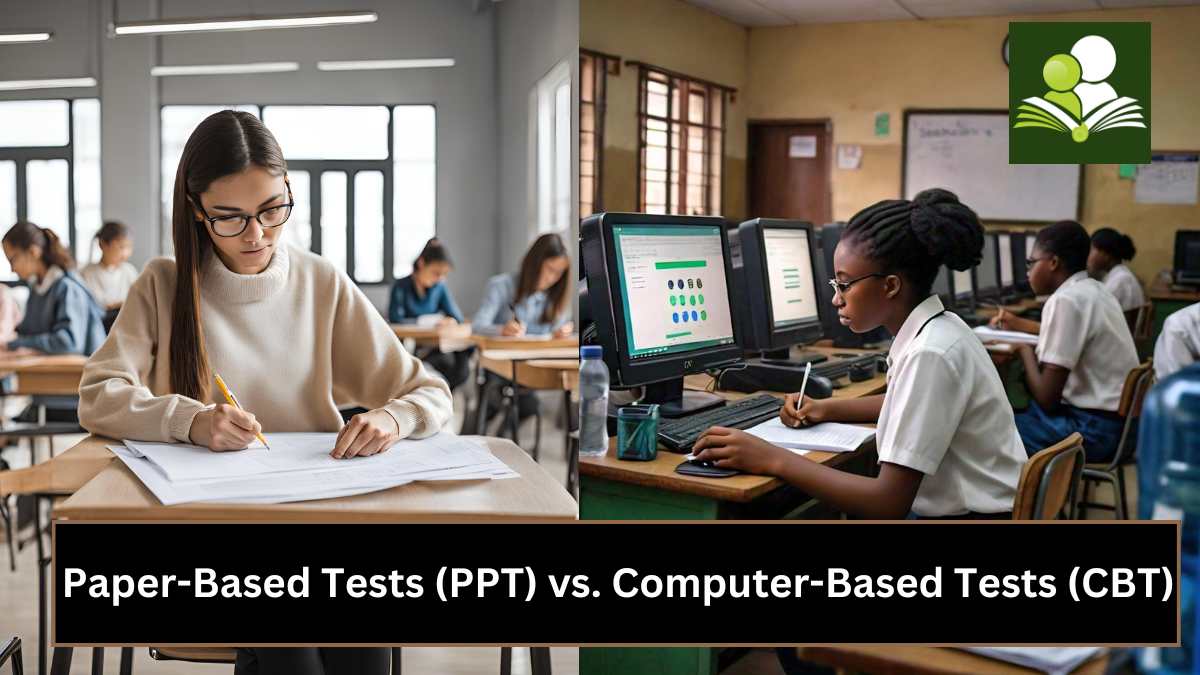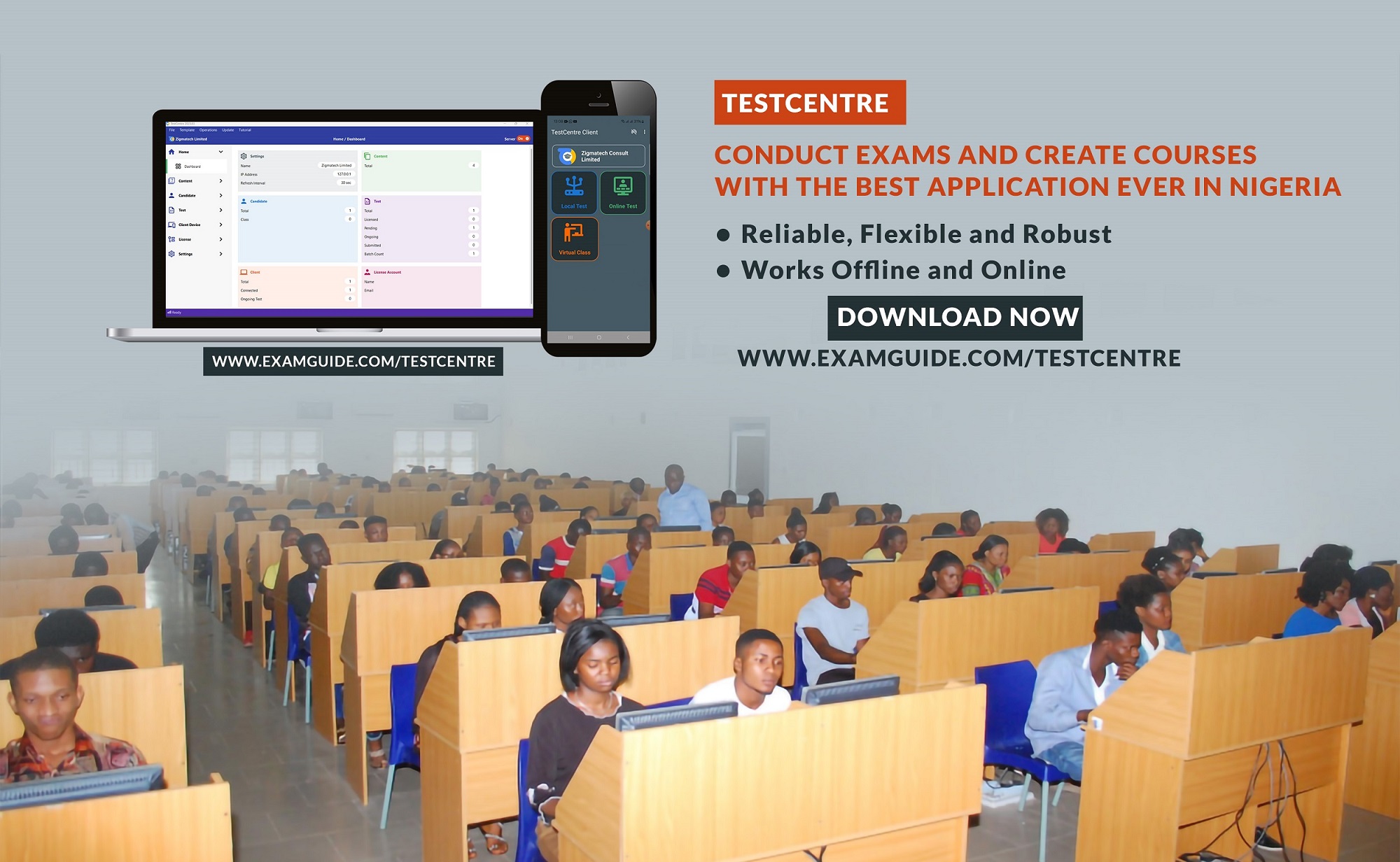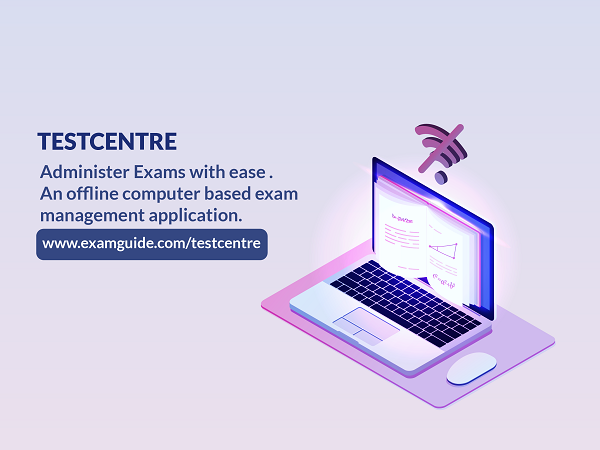
A Comprehensive Guide to Paper-Based Tests (PPT) vs. Computer-Based Tests (CBT)
The methods used to administer exams have evolved significantly in the modern educational landscape. Traditional Paper-Based Tests (PPT) have long been the standard, but the rise of technology has led to the increasing popularity of Computer-Based Tests (CBT).
This article provides an in-depth comparison of PPT and CBT systems, highlighting their differences, challenges, and benefits, and explores why educational institutions might consider adopting CBT systems for exams and assessments.
Table of Content
What are Paper-Based Tests (PPT)?
What are Computer-Based Tests (CBT)?
Benefits of Paper-Based Tests (PPT)
Benefits of Computer-Based Tests (CBT)
Challenges of Paper-Based Tests (PPT)
Challenges of Computer-Based Tests (CBT)
Why Schools Should Adopt a CBT System
What Can You Do With TestCenter?
What are Paper-Based Tests (PPT)?
Paper-pencil tests (PPT) also known as Paper Based Tests involve printed exam papers and answer sheets that students complete manually. These are traditionally administered in a classroom setting under the supervision of invigilators. After completion, the answer sheets are collected and manually graded by teachers or examiners.
Historical Context
PPT has been the standard method of examination for centuries, providing a familiar and straightforward approach to student assessment. It has been the backbone of educational systems worldwide, from primary schools to higher education institutions.
While the Paper-pencil test remains widely used, especially in regions with limited access to technology, there is a growing shift towards more modern assessment methods. This shift is driven by the need for greater efficiency, accuracy, and adaptability in the testing process.
General Characteristics:
- Physical Materials: Exams are printed on paper, and students write their answers in physical booklets.
- Classroom Setting: Tests are usually conducted in a controlled classroom environment under the supervision of invigilators.
- Manual Administration: The entire process, from distributing test papers to collecting answer sheets, is handled manually.
- Manual Grading: After the exam, answer sheets are graded by teachers or examiners, often requiring substantial time and effort.
What are Computer-Based Tests (CBT)?
CBT utilizes computers or tablets to administer exams. Students interact with a digital interface to answer questions, and their responses are submitted electronically. CBT can be conducted in various settings, including computer labs, equipped classrooms, or remotely, and often features automated grading systems.
Historical Context
CBT began gaining traction in the late 20th century with the advent of personal computers and the internet. Initially adopted for standardized testing and professional certifications, it has expanded to various educational levels as technology becomes more accessible.
The use of CBT is rapidly increasing, driven by advancements in technology and the need for more efficient and secure testing methods. Many educational institutions are transitioning to CBT to leverage its benefits, including immediate feedback, enhanced security, and detailed analytics.
General Characteristics:
- Digital Interface: Exams are conducted on computers or tablets, with questions displayed on screens and answers submitted electronically.
- Flexible Settings: CBT can be administered in various environments, such as computer labs, equipped classrooms, or remotely, providing greater flexibility in scheduling and location.
- Automated Administration: The process is largely automated, from distributing the digital exams to collecting responses.
- Automated/Semi-Automated Grading: Objective questions (such as multiple-choice or true/false) are graded automatically by the system, while subjective questions may require manual grading or a combination of both.
Benefits of Paper-Based Tests (PPT)
Familiarity and Comfort
Both students and educators may be more comfortable and familiar with the traditional paper-based format. This can be especially true for younger students or those less accustomed to technology.
Reduced Test Anxiety
Some students experience test anxiety when taking exams on a computer. The physical act of writing on paper can be calming for some test-takers.
Accessibility
Not all schools or students have access to reliable computers and internet connections. PPT eliminates these technological barriers
Focus and Concentration
The distraction-free environment of a paper-based exam can be beneficial for students who struggle to concentrate with a computer screen in front of them.
Promoting Writing Skills
Paper-based tests encourage students to develop their handwriting and written expression skills, which remain important in many areas of life and work.
Security Concerns
While some argue CBT offers stronger security, concerns about potential hacking or technical glitches persist. Paper-pencil tests eliminate these specific cyber security risks.
Logistical Simplicity
For small-scale or low-stakes assessments, paper-based tests can be easier and less expensive to administer compared to setting up a CBT system.
Archiving and Record-Keeping
Physical copies of exams can be easily archived for future reference, which can be helpful for legal or academic purposes.
Benefits of Computer-Based Tests (CBT)
Computer-based testing (CBT) is rapidly transforming the way educational institutions assess learning. Here's a closer look at the numerous advantages CBT offers over traditional paper-based testing (PPT):
Increased Efficiency and Accuracy
Grading exams electronically is significantly faster and less prone to human error compared to manual scoring. This leads to quicker turnaround times for results and valuable feedback for students.
Enhanced Security
CBT systems often incorporate features like password protection, question randomization, and limited testing windows to minimize cheating.
Reduced Environmental Impact
CBT eliminates the need for paper test booklets and answer sheets, significantly reducing the environmental impact associated with testing.
Testing Flexibility
CBT offers greater flexibility in terms of scheduling and location. Exams can be administered remotely with proctoring software, allowing students to test from convenient locations.
Richer Question Formats
CBT allows for a wider range of question formats beyond simple multiple choice. Incorporation of simulations, multimedia elements, and interactive questions can create a more engaging testing experience.
Detailed Data Analysis
CBT systems can generate comprehensive reports on student performance, providing valuable data for educators. These reports can be used to analyze learning trends, identify areas needing improvement, and personalize learning plans for students.
Streamlined Testing Administration
CBT simplifies test administration, freeing up valuable time and resources for educators. Test creation, distribution, grading, and reporting are all automated within the CBT system.
Immediate Feedback
Some CBT systems allow students to receive immediate feedback on their performance after completing the exam. This can be a valuable learning tool, allowing students to identify areas of strength and weakness.
Reduced Costs
While initial setup costs for a CBT system may exist, the long-term cost savings associated with reduced paper usage, faster grading, and streamlined administration can be significant.
Challenges of Paper-Based Tests (PPT)
While paper-based tests (PPT) have been the traditional method of assessment for a long time, they come with their own set of challenges that can hinder their effectiveness in today's educational landscape. Here's a closer look at some of the key drawbacks of PPT:
- Prone to Error: Manual scoring of exams is susceptible to human error. Factors like fatigue, rater bias, or unclear handwriting can lead to inaccurate grading, potentially impacting student outcomes.
- Slow Feedback: The grading process for PPT exams can be time-consuming, especially for large classes or standardized tests. This delays valuable feedback for students, hindering their understanding of their strengths and weaknesses.
- Security Concerns: Securing exams and preventing cheating can be difficult with paper-based systems. Leaks, unauthorized access to test materials, or copying during exams are potential security risks.
- Logistical Hurdles: Distributing, collecting, and storing large volumes of paper can be cumbersome and expensive for schools. Managing space, transportation, and potential damage to paper tests adds logistical complexity.
- Limited Data Analysis: Traditional Paper-pencil tests offer limited data analysis capabilities. Detailed insights into student performance trends or individual strengths and weaknesses can be difficult to glean from paper-based results.
- Environmental Impact: The reliance on paper for test booklets and answer sheets contributes to deforestation and paper waste. This environmental impact is a growing concern in today's world.
- Limited Question Formats: PPT exams are primarily limited to multiple-choice, fill-in-the-blank, or short answer formats. Assessing higher-order thinking skills or complex problem-solving abilities can be difficult with traditional PPT methods.
- Disorganization Risk: Lost or misplaced exams can create difficulties in grading and student record-keeping. Paper-based systems are susceptible to human error in managing physical materials.
- Accessibility Issues: Students with disabilities, such as visual impairments or motor skill limitations, may face challenges with traditional paper-based tests. Adapting exams for diverse needs can be more complex with PPT.
- Susceptibility to Damage: Paper-based exams can be damaged by accidental spills, tears, or improper storage. Damage to exams can potentially invalidate student responses.
Challenges of Computer-Based Tests (CBT)
While computer-based testing (CBT) offers numerous advantages, it's not without its challenges. Here's a breakdown of some key issues to consider when implementing CBT:
- Technology Access and Equity: Not all students have access to reliable computers and internet connections at home. This can create an uneven playing field if CBT becomes the primary testing method. Schools need to ensure equitable access to technology for all students.
- Technical Issues and Glitches: Computer malfunctions, software crashes, or internet connectivity problems can disrupt the testing process and cause frustration for students. Robust technical support and backup plans are crucial.
- Digital Literacy and Comfort: Some students, particularly younger ones, may require additional training and support to navigate the CBT interface effectively. Ensuring digital literacy is important for successful participation in CBT exams.
- Increased Test Anxiety: CBT can create test anxiety for students unfamiliar with technology-based testing. Providing practice tests and familiarizing students with the CBT platform beforehand can help alleviate anxiety.
- Potential for Cheating: While CBT systems have security features, some argue that determined cheaters can still find ways to exploit loopholes. Constant vigilance and ongoing system updates are necessary to maintain test integrity.
- Limited Question Formats: CBT may not be suitable for all types of assessments. Essay writing or complex problem-solving questions can be more effectively evaluated in a paper-based format.
- Upfront Costs: Implementing a CBT system can involve initial investment costs for hardware, software, and potential training for educators. Long-term cost savings can outweigh initial costs, but upfront investment needs to be considered.
- Teacher Training: Educators may need training on how to create, administer, and analyze CBT exams. Providing adequate training and support is essential for successful CBT implementation.
- Potential for Bias: Certain question formats or the testing environment itself might inadvertently disadvantage students with learning disabilities or those who struggle with using technology. Careful design and sensitivity to diverse learning needs is crucial.
CBT vs PPT: Which is Better?
The choice between Computer-Based Testing (CBT) and Paper-Based Testing (PPT) depends on the specific needs, resources, and goals of the educational institution.
Computer-based Tests are generally better for schools that have the technological infrastructure and resources to support it. It offers efficiency, flexibility, immediate feedback, and advanced data analytics, which can greatly enhance the learning and assessment process. CBT is also more secure and environmentally friendly.
Paper-pencil tests may be better suited for schools with limited access to technology or those that prefer traditional methods. It is reliable, familiar, and easier to implement in low-tech environments.
Ultimately, the decision should be based on the specific context and needs of the school, considering factors such as technological readiness, budget, student demographics, and educational goals.
Why Schools Should Adopt a CBT System
Schools can greatly improve their assessment methods by adopting Computer-Based Testing (CBT). This modern approach offers several advantages over traditional paper-based testing (PPT). CBT streamlines the process by automating grading, test creation, distribution, and reporting, leading to quicker results and feedback. It also reduces costs associated with paper, printing, and storage.
CBT enhances security with features like password protection and randomized questions, reducing the risk of cheating. It provides valuable data, offering detailed reports that help educators identify student strengths and weaknesses, enabling personalized learning plans. Additionally, CBT can make testing more engaging by incorporating multimedia elements and diverse question formats.
While initial implementation may require investment, the long-term benefits, security, data-driven insights, and a more engaging testing experience make CBT a worthwhile choice for creating an effective learning environment.
What Can You Do With TestCenter?
TestCenter is a flexible and robust Computer-Based Testing (CBT) and content management platform designed to enhance exam administration and protect intellectual properties for schools and other organizations.
Here are some key features and benefits of TestCenter:
- Offline and online Exams: Conduct exams offline with devices connected via LAN or wireless networks, ensuring no internet dependency. Supports online exams, allowing students to take tests remotely from anywhere with internet access.
- Versatile Applications: TestCentre application is well-suited for various exam management needs, including recruitment, promotion, entrance exams, and terminal school exams.
- Secure Academic Content: Manage and circulate educational content, such as videos and notes, with robust access controls to ensure only licensed users can view or use the materials.
- Intellectual Property Protection: Safeguard your school’s intellectual properties, preventing unauthorized access and distribution.
- Licensed Access: Ensure that only authorized users have access to exams and academic content, maintaining the integrity and security of your institution’s resources.
- Time and Cost Savings: Automate exam scheduling, grading, and result analysis to save time and reduce manual effort.
- Cost-Effective: Lower operational costs by minimizing the need for physical exam materials and manual processes.
- Adaptable to Needs: Scale the platform according to your institution's specific needs, whether you’re managing small-class assessments or large-scale standardized tests.
TestCenter is a comprehensive solution for schools and other organizations looking to modernize their exam administration and content management processes. By adopting CBT through TestCenter, institutions can benefit from increased flexibility, robust security, and significant cost and time savings. Enhance your exam management capabilities and protect your educational resources with TestCenter.
To get started with TestCenter and experience these benefits firsthand, click here.
Conclusion
Understanding the fundamental differences between Paper-pencil tests (PPT) and Computer-Based Tests (CBT) is essential for educators and administrators. Each system has its strengths and challenges, and the choice between them depends on various factors, including the institution's goals, resources, and the specific needs of its students.
As technology continues to evolve, CBT offers a promising path forward, providing opportunities for more efficient, flexible, and insightful assessments in education.
No comment found
Related Posts

TESTCENTRE: A ROBUST PLATFORM FOR EXAM ADMINISTRATION AND CONTENT MANAGEMENT

TESTCENTRE: AN OFFLINE EXAM MANAGEMENT APPLICATION

TESTCENTRE: THE OFFLINE EXAM MANAGEMENT SOLUTION


